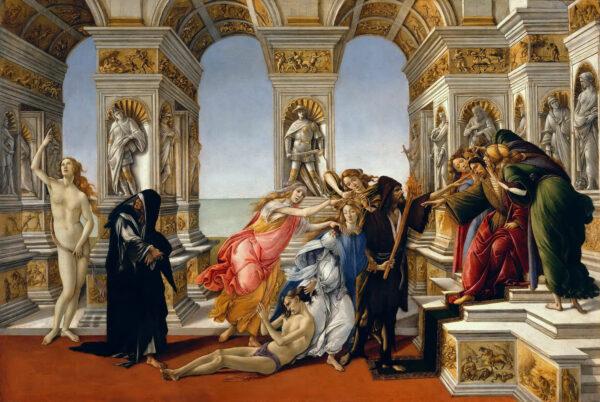
“Calumny of Apelles,” circa 1496, by Sandro Botticelli. Tempera on panel; 24.4 inches by 35.8 inches. Uffizi Gallery, Florence, Italy. Public Domain
The information age has also brought about a massive amount of misinformation. There’s so much available information that it’s difficult to know what is true and what is false, and because of this, some of us might fall victim to what we call “fake news.”





